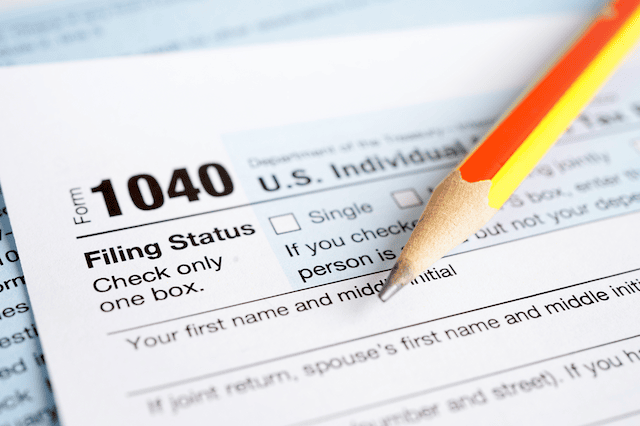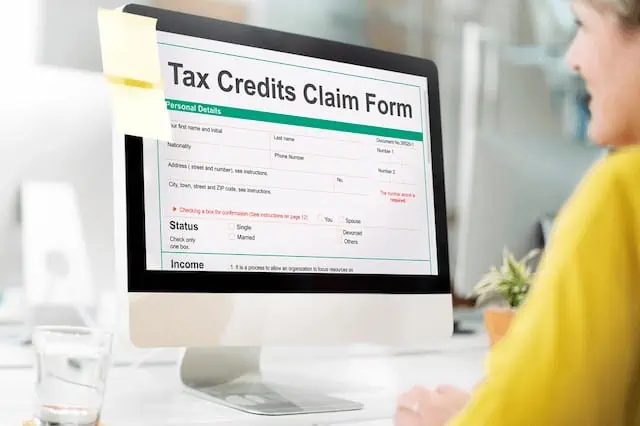Nobody likes paying taxes. But everybody loves getting a tax refund. It feels like free money, even though the government is simply giving back your own hard-earned dollars.
If you’re getting a tax refund this year, the hard part is waiting around for it to arrive. According to the IRS, most refunds arrive within 21 days from the date you file your federal income tax return. But that’s only if you take certain steps to get your tax refund faster.
So, what do you need to do (or not do) to speed up this year’s tax refund? It’s nothing too difficult … just follow the basic tips outlined below.
1. File Your Taxes Early

One way to get your federal tax refund faster is to file your tax return early. Naturally, the sooner you file your federal tax return, the sooner the IRS can start processing your tax refund and get the money into your hands.
In addition, the IRS’s workload increases as tax filing season drags on. This can result in longer tax refund processing times at the IRS, which can delay your refund. By filing early, you can get out in front of any processing delays.
WealthUp Tip: Tax season started on Jan. 29, 2024, and ends for most people on April 15, 2024 (April 17 for residents of Maine and Massachusetts). Filing “early” generally means within the first month of the tax filing season—basically before the end of February.
Other Reasons to File Your Taxes Early
There are a number of other benefits of filing your tax return early. For instance:
- If you don’t want to handle your own return, you’ll have more time to find a tax preparer.
- You might save money if you’re using commercial tax software, since the software providers sometimes raise their prices toward the end of tax season.
- Your chances of being the victim of tax identity theft is reduced, because the IRS will receive your tax return before any fraudulent returns filed under your name.
- If you owe tax to the IRS this year, you’ll have more time to pay your tax bill.
- If you’re applying for a mortgage or submitting a rental application, you’ll have the tax information you need sooner.
2. File Your Return Electronically

Filing your tax return electronically (i.e., e-filing) will definitely speed up your tax refund. If you mail a paper return, it takes days (at a minimum) to arrive at the IRS processing center. If you e-file your return, the IRS gets it right away.
Plus, it takes a lot longer for the IRS to process a paper return than it does to handle an e-filed return. And the longer it takes to process your return, the longer it takes the tax agency to start processing your tax refund.
How to E-File Your Tax Return
There are a number of ways to file electronically. If you hire a tax preparer to do your taxes, he or she will be able to e-file your return.
You can also e-file tax returns prepared with commercial tax software from companies such as TurboTax or H&R Block.
|
Primary Rating:
4.7
|
Primary Rating:
4.6
|
|
Special 20% Off Offer Good Through 2/14/2024: DIY Options: $0-$71.20.* TurboTax Live Assisted ($0-$135.20) and TurboTax Live Full Service (Starting at $80.10) also available.** State filings are additional charges for paid products.***
|
DIY Options: Free: $0. Deluxe + State: $49. Premium: $75. Self-Employed: $89.* Online Assist, In-Person Assistance, and Drop-Off also available.**
|
The IRS also has a number of ways to file your tax return for free, and they all permit electronic filing. The free IRS filing methods include the Free File program, Free File Fillable Forms, and the new Direct File pilot program that 12 participating states will phase in this year.
You can also have your tax return e-filed for free if you qualify for the tax preparation services offered through the IRS’s Volunteer Income Tax Assistance (VITA) program or Tax Counseling for the Elderly (TCE) program.
Members of the military can e-file their tax return for free by using MilTax software to prepare their return.
Related: Child Tax Credit FAQs [What Every Parent Needs to Know]
3. Sign Up for Direct Deposit

Another way to get your tax refund faster is to select direct deposit as your refund method. If you choose the direct deposit option for the delivery of your tax refund, the IRS will deposit your refund directly into your bank account (either a checking account or a savings account).
You might even be able to have your refund applied to a prepaid debit card or mobile payment app if they have an account and routing number that you can provide to the IRS. Check with the financial institution that issued your debit card or the provider of your mobile apps to see if they can be used to accept a tax refund and to obtain the necessary routing and account numbers.
How does direct deposit speed up your refund? Just as it takes the IRS longer to process a paper tax return, it also takes longer to process a paper tax refund check. Plus, a paper check sent via “snail mail” generally takes several days to arrive. With direct deposit, the money is sent right to your bank account or debit card in seconds. That’s why having your refund deposited directly into your bank account or applied to a prepaid debit card is a much faster way to receive your refund.
How Much Faster Is Electronic Filing and Direct Deposit?
As noted earlier, the IRS issues 90% of tax refunds within three weeks. However, that timeline is for e-filed returns where direct deposit is selected.
By comparison, it can take four weeks or more to receive a tax refund if you mail in a paper tax return and request a paper refund check.
4. Avoid Errors on Your Tax Return

Errors on your tax return can slow down your tax refund. If the IRS flags a mistake, they’ll have to pull your return from the normally processing queue to take a look. That’s going to take extra time, which very well could delay your refund.
So, make sure you double-check your return before sending it off to the IRS if you want your tax refund faster. This is even more important if someone else prepares your return for you. In addition to catching errors that might delay your refund, you’re the one who’s ultimately responsible if there’s inaccurate information in your return—not the preparer (although they can get in trouble for their own acts of fraud or other criminal activity).
WealthUp Tip: If you’re preparing your own tax return, using tax software will help cut down on errors. For instance, the software will do the math for you and look for potential mistakes. In addition, if you file electronically, the IRS e-file system might detect a common error and send your return back to you for correction.
Related: 2 States Repealed Taxes on Social Security Benefits (Do You Live In One of Them?)
Watch Out for These Common Mistakes
Here are a few common, but easily avoidable mistakes people make on their tax return. Double-checking your return for these errors could mean you get your tax return faster:
- Mailing a torn or cut paper tax form to the IRS.
- Not providing or providing an incorrect name or Social Security number for yourself, your spouse, or a dependent.
- Checking more than one filing status box.
- Calculating tax breaks incorrectly.
- Not including enough postage when mailing a paper return.
- Using the wrong method to figure your tax.
- Providing an incomplete or inaccurate address (e.g., an old address, apartment number missing, no ZIP code, etc.).
- Claiming the wrong standard deduction amount.
- Forgetting to sign and date your tax return.
- Failing to attach a W-2 form or another required IRS form (put all forms and schedules in the right order, too).
- Providing an incorrect routing or bank account number for direct deposit.
- Mailing a paper return to the wrong IRS processing center.
- Filing more than one original return for the same tax year.
This, of course, is not an all-inclusive list … so watch out for other errors that could slow down the IRS processing system if you want to get your tax refund faster.
Related: Charitable Tax Deduction: What to Know Before Donating
5. Don’t Claim Certain Tax Credits

I’m not going to tell you that you shouldn’t claim a tax credit that you’re entitled to. However, you should be aware that tax refunds filed early are automatically delayed if you claim either the earned income tax credit or the additional child tax credit (i.e., the refundable portion of the child tax credit).
A lot of fraudulent tax returns are filed to claim these two credits. As a result, the IRS is prohibited by law from issuing a refund until mid-February 2024 if the earned income tax credit or additional child tax credit is claimed on your 2023 tax return. This applies to the entire refund, not just the portion associated with the credit.
According to the IRS, most refunds associated with these credits for the 2023 tax year will be available in bank accounts or on debit cards by Feb. 27, 2024, for taxpayers who chose direct deposit for their refunds (assuming there are no other issues with their tax return).
If you file your return after mid-February, there will be no additional delay in sending out a refund.
Again, I’m not suggesting that you don’t claim a tax credit for which you’re qualified. But, realistically, your refund might arrive faster if you don’t claim the earned income tax credit or additional child tax credit. That’s just an unfortunate fact.
Should Parents Claiming the Child Tax Credit Wait to File This Year?
Perhaps you’ve heard that Congress is working on legislation that would temporarily increase the child tax credit, including the refundable portion of the credit (see our article on the child tax credit for details).
If passed, some of the changes would impact the 2023 child tax credit, which you need to claim on the tax return you file by April 15, 2024 (April 17 if you live in Maine or Massachusetts).
But what happens if you file your tax return early, and the child tax credit is changed later? Or should parents just wait a bit to file their return to see what happens with the legislation?
As the bill is at press time, you won’t have to do anything to claim the enhanced credit if you file your tax return right now. For example, you won’t have to file an amended return to get any higher credit amount. Instead, the IRS will send you a refund for the amount, if any, by which your child tax credit for the year is increased. As a result, there’s no reason for parents to wait on Congress to act (or for the bill to stall) before filing their 2023 federal income tax return.
6. Get a Tax Refund Loan

If you need your tax refund immediately, you might qualify for a tax refund anticipation loan from your tax preparer or tax software company. Basically, you get your refund (or up to a certain amount) from the preparer or software company shortly after your tax return is filed. It’s a loan, so you’ll have to pay back the amount received when your refund arrives.
Of course, there’s a catch. Although some loans are free, you might have to pay a fee and/or interest to get a tax refund loan. This is especially true if your refund is above a certain amount.
In some cases, you might have to get your refund loan in the form of a debit card or credit on a mobile payment app.
Related: IRS Erases $1 Billion In Back Tax Penalties
Is a Tax Refund Loan Worth It?
Depending on the loan, you might be paying a hefty price to get your tax refund two or three weeks early. If there are no fees or interest, then no problem. But if you’re paying fees or interest, seriously consider whether the cost is worth it to speed up your refund by only a few weeks.
For some people, it’s worth the extra cost to get the money sooner (e.g., if you urgently need the cash for necessities, a medical bill, or the like). However, if you don’t have a desperate need for the money, you might be better off waiting for the IRS to send your money. This is particularly true if you’ve already done everything available to get your tax refund faster and have no reason to expect an IRS delay.
How to Track the Status of Your Refund

Once you’ve filed this year’s federal income tax return, you can track the status of your refund using the IRS’s Where’s My Refund tool. This won’t speed up your refund, but it might make the time pass more quickly if you’re not constantly worried about how long it will take to arrive.
You can start tracking your refund within 24 hours of e-filing your return. If you mail in a paper return, wait four weeks to check the status of your refund using the online tool.
To access the tool, you’ll need:
- Your Social Security number or individual taxpayer identification number (ITIN)
- Your filing status
- The exact refund amount on your return
Once there, the status of your refund will be one of the following:
- Return Received (the IRS received your return and is processing it)
- Refund Approved (the IRS approved your refund and is preparing to issue it by the date shown)
- Refund Sent (the IRS sent the refund to your bank or to you in the mail)
Once the refund is sent, it can take up to five days to actually show in your bank account or several weeks to arrive in the mail.
WealthUp Tip: You can also check the status of your refund on the IRS2Go mobile app.







![Child Tax Credit FAQs [What Every Parent Needs to Know] 24 child tax credit parents kissing baby](https://wealthup.com/wp-content/uploads/child-tax-credit-parents-kissing-baby-600x403.webp)


